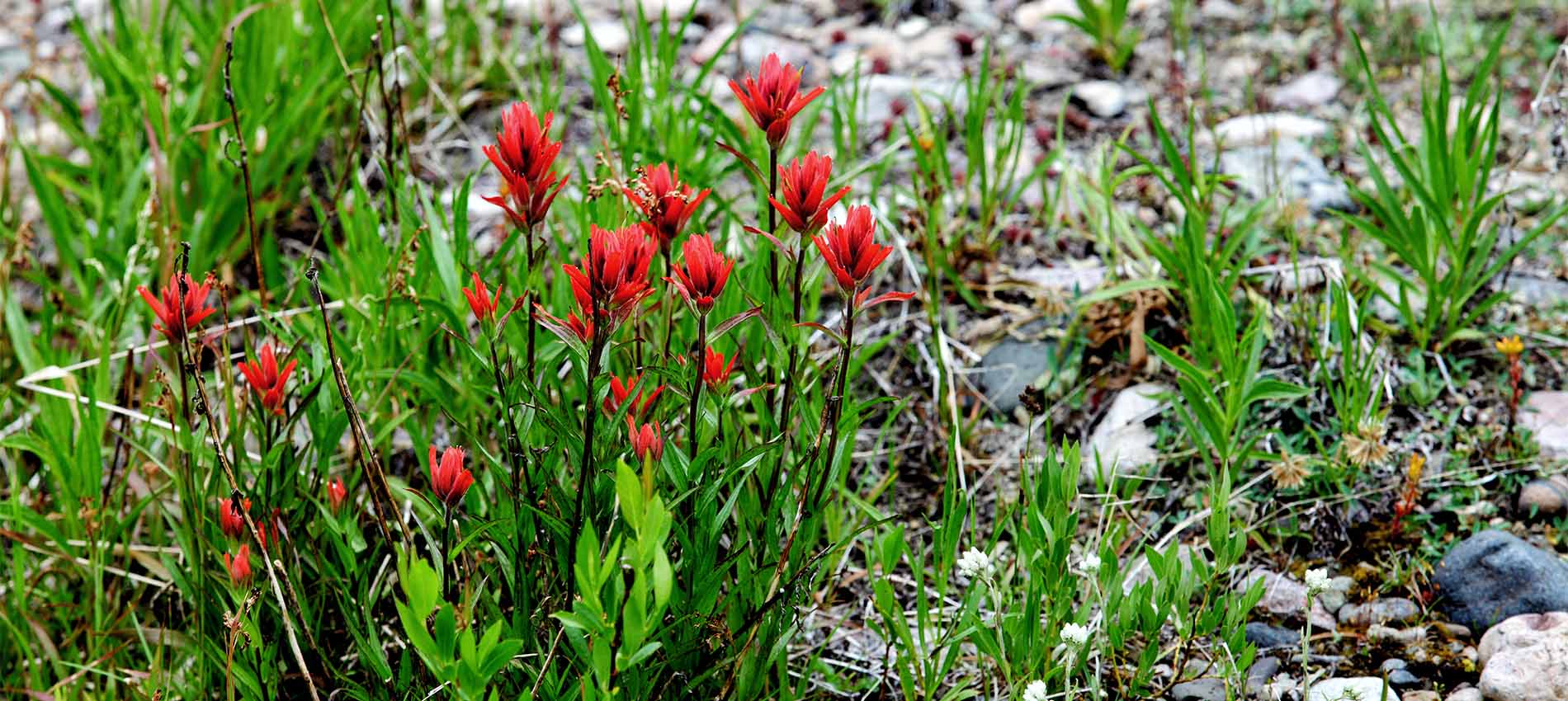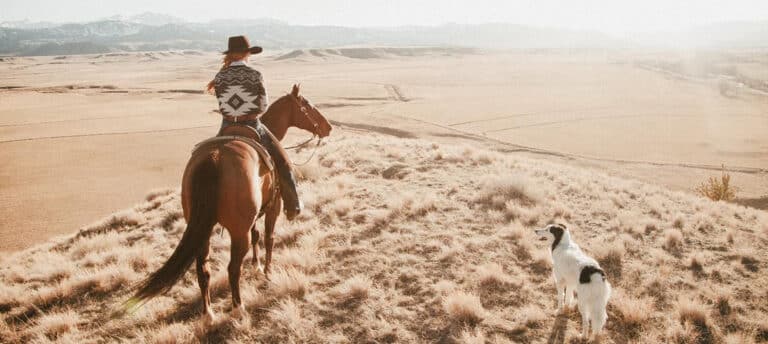This is the second in our weekly series on regional native plants and what you should know going into the growing season. Visit www.lawnstarter.com for more tips on lawn care and local businesses in your area.
The Mountain West is a region of majesty and beauty. The wide mountain range lends to native plants that can survive in adverse conditions. The following native plants of the Mountain West can be seen in various habitats and do well in area gardens and landscapes.
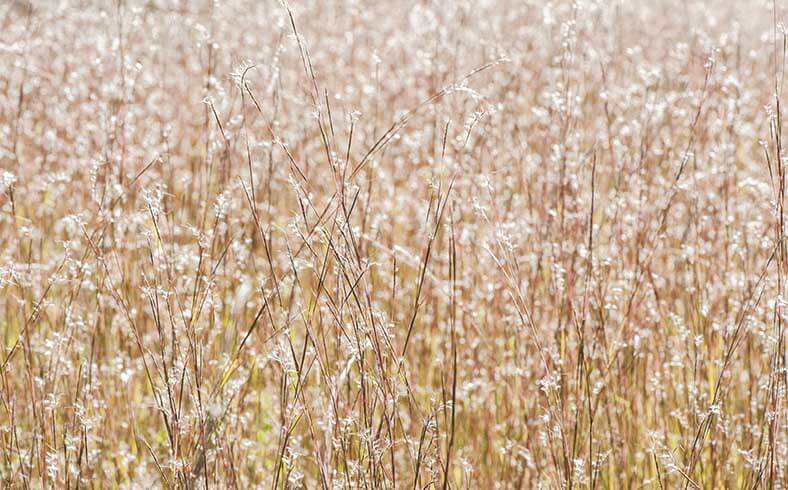
Little bluestem
This ornamental grass produces different shades of color throughout the year. It creates blue-green stems in late summer and then those stems change to a beautiful tan and red color during the fall. This warmer coloring will remain throughout winter making it a focal point during cold and snowy Colorado winters. Little bluestem prefers dry soil as well as partial to full sunlight. It can grow to be between 18-24 inches in height and is a solid staple in area gardens. This native plant does well to tolerate mountain spring times that can widely range from cold to warm climates. Little bluestem plants also attract butterflies and birds that enjoy its fluffy seeds.
- Scientific name: Schizachyrium scoparium
- Sunlight: Sun, part shade
- Moisture: Dry
- Bloom time: June–December
- Height: 3-6 ft.
- Appearance: Grasslike with fluffy white bloom
- Attracts: Birds and butterflies
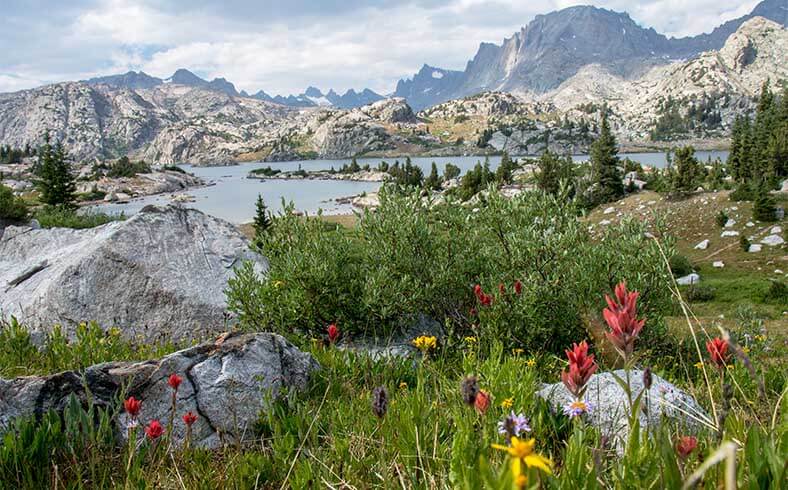
Wyoming indian-paintbrush
Also known as “prairie fire,” this gorgeous red flower enjoys moist soils and partial shading. It can grow up to 12-30 inches tall and is the state flower of Wyoming. The plant’s name came from the idea that the beautiful tops look like they had been freshly dipped in red paint. Some of the flower coloring can appear yellow as well.
Wyoming indian-paintbrush is a semi-parasitic plant that relies on neighboring host plants to survive. The actual plant itself is a long tubed stem that draws water and nutrients by attaching to the root system of other plants. The leaves of the plant are long and narrow and become hairy towards the top of the stem by the flower. The beautiful red coloring of Wyoming indian-paintbrush has also been used as dyes.
- Scientific name: Castilleja linariifolia
- Sunlight: Part shade
- Moisture: Well-drained, rocky soils
- Bloom time: May–October
- Height: 1-3 ft.
- Appearance: Perennial with several long, leafy stems
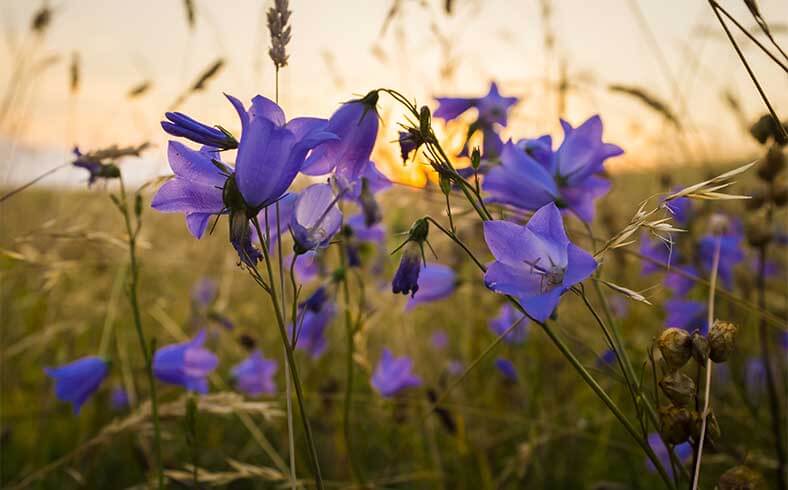
Bluebell bellflower
This beautiful plant showcases light blue bell shaped blooms during the summer. Bluebell bellflower prefers dry sandy soil and can do well in most light conditions. It can reach up to 15 inches high and 12 inches wide. Bluebell Bellflower is a delicate perennial that can have weak stems causing the plant to bend over. Different plants will react differently based on which habitat they are located in. The light blue or purple blossoms can slightly nod at the top of the stem and attract hummingbirds as well. Bluebell Bellflower naturally grows in wooded areas but would do well in a well-drained area of a garden.
- Scientific name: Campanula rotundifolia
- Sunlight: Sun to shade
- Moisture: Sandy, well-drained soils
- Bloom time: June–September
- Height: 1-3 ft.
- Appearance: Hardy perennial that blooms amidst alpine meadows
- Attracts: Hummingbirds
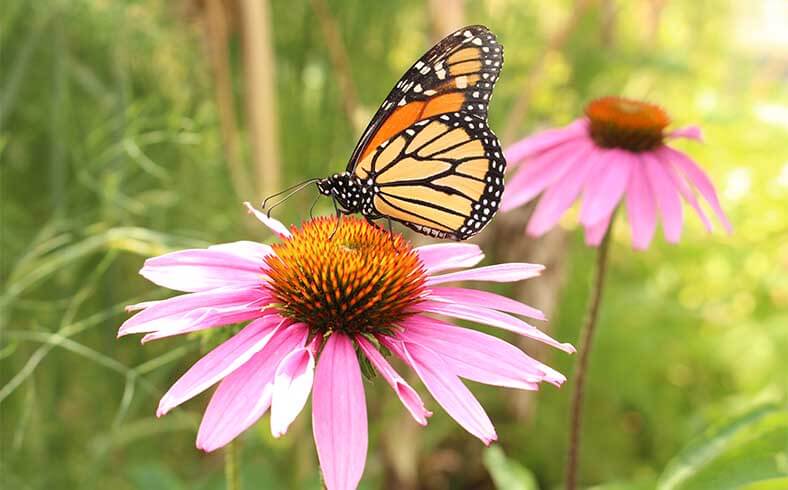
Black samson
This stunning daisy looking coneflower produces hardy flower heads surrounded by delicate light pink rays. Black samson is a sturdy perennial that produces flowers on top of strong stems that can reach up to 24 inches tall. The plant is supported by a tap root that can be as far as 8 feet into the soil making this plant easy to find in rocky terrain. The blooms appear in late spring to early summer and the plant requires little watering and prefers dry soil. Black samson does well in partly shaded to sunny conditions and attracts butterflies seeking nectar. The Echinacea qualities of this plant have proven effective for medicinal purposes in low doses.
- Scientific name: Echinacea angustifolia
- Sunlight: Sun to partial shade
- Moisture: Low
- Bloom time: May–July
- Height: 1-3 ft.
- Appearance: Distinctive spiny cone atop a stout stem and within cluster of pink-lavender flowers
- Attracts: Butterflies
These native plants have proven their adaptability to thrive in the diverse and often rugged conditions of the Mountain West region. They can do well in a wide range of conditions and their blossoms provide any space with a heavy dose of natural beauty. These plants can be found naturally all throughout the Mountain West and would also compliment a local garden landscape.
Read our other guides to other native plants found throughout different regions of the U.S.!
Stephanie Smith is the regional marketing representative of LawnStarter Denver, a stress free online platform that connects homeowners with lawn care professionals for convenient services.
